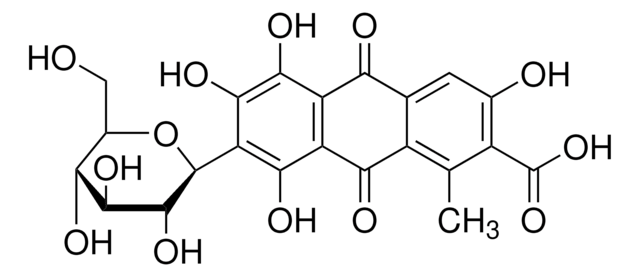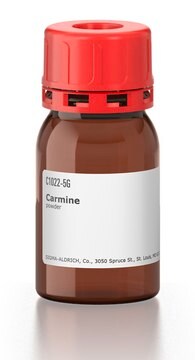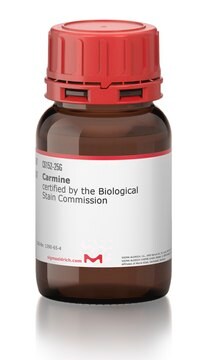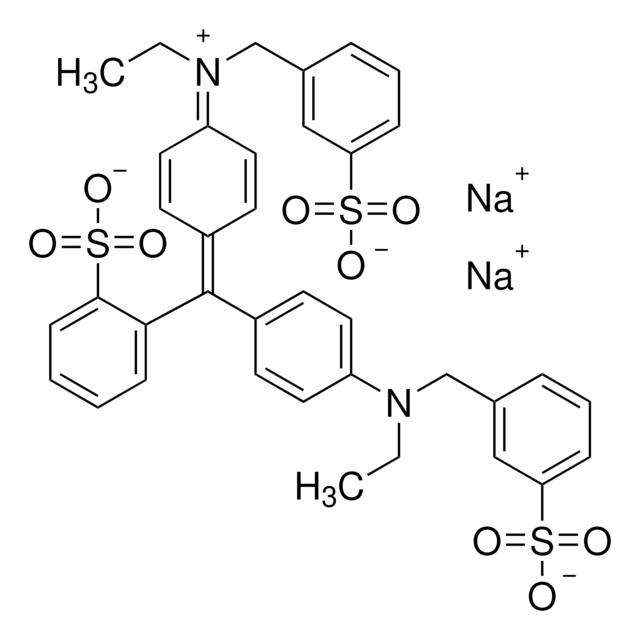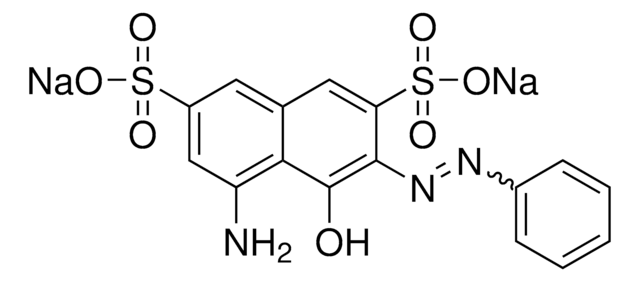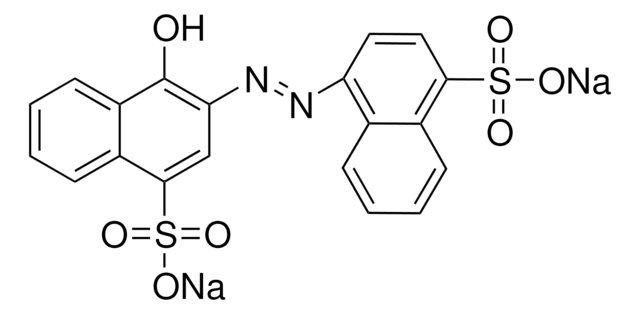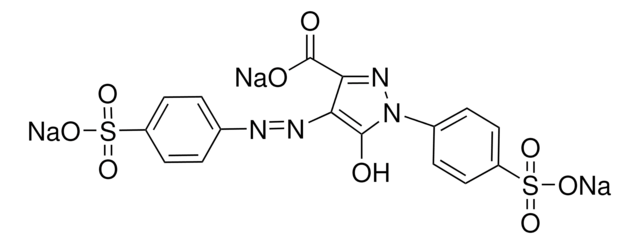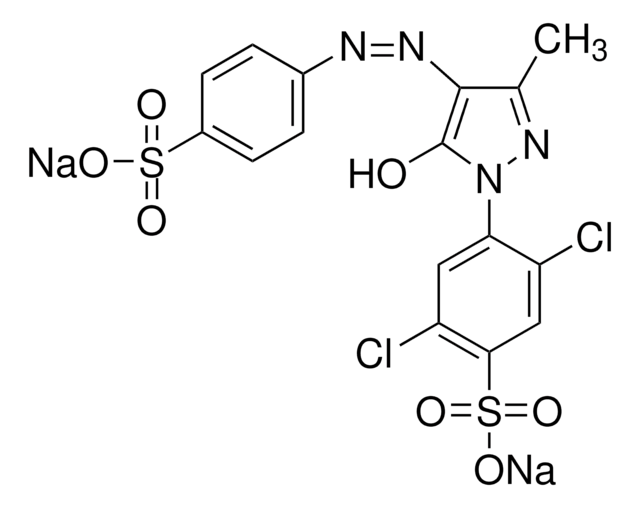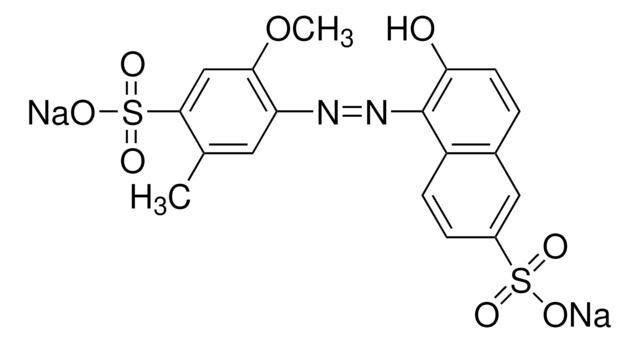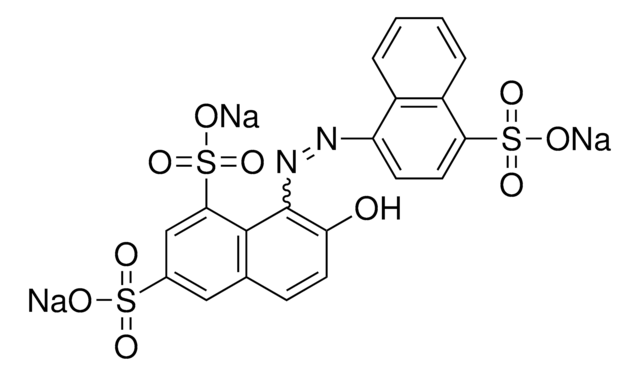Kluczowe dokumenty
11298
Carminic acid
analytical standard
Synonim(y):
Natural Red 4
About This Item
Polecane produkty
klasa czystości
analytical standard
Poziom jakości
Próba
≥90% (HPLC)
okres trwałości
limited shelf life, expiry date on the label
metody
HPLC: suitable
gas chromatography (GC): suitable
Zastosowanie
cleaning products
cosmetics
food and beverages
personal care
Format
neat
ciąg SMILES
Cc1c(C(O)=O)c(O)cc2C(=O)c3c(O)c(O)c([C@@H]4O[C@H](CO)[C@@H](O)[C@H](O)[C@H]4O)c(O)c3C(=O)c12
InChI
1S/C22H20O13/c1-4-8-5(2-6(24)9(4)22(33)34)13(25)10-11(15(8)27)16(28)12(18(30)17(10)29)21-20(32)19(31)14(26)7(3-23)35-21/h2,7,14,19-21,23-24,26,28-32H,3H2,1H3,(H,33,34)/t7-,14-,19+,20-,21+/m1/s1
Klucz InChI
DGQLVPJVXFOQEV-JNVSTXMASA-N
Szukasz podobnych produktów? Odwiedź Przewodnik dotyczący porównywania produktów
Opis ogólny
Zastosowanie
Kod klasy składowania
11 - Combustible Solids
Klasa zagrożenia wodnego (WGK)
WGK 2
Środki ochrony indywidualnej
Eyeshields, Gloves, type N95 (US)
Wybierz jedną z najnowszych wersji:
Masz już ten produkt?
Dokumenty związane z niedawno zakupionymi produktami zostały zamieszczone w Bibliotece dokumentów.
Klienci oglądali również te produkty
Nasz zespół naukowców ma doświadczenie we wszystkich obszarach badań, w tym w naukach przyrodniczych, materiałoznawstwie, syntezie chemicznej, chromatografii, analityce i wielu innych dziedzinach.
Skontaktuj się z zespołem ds. pomocy technicznej